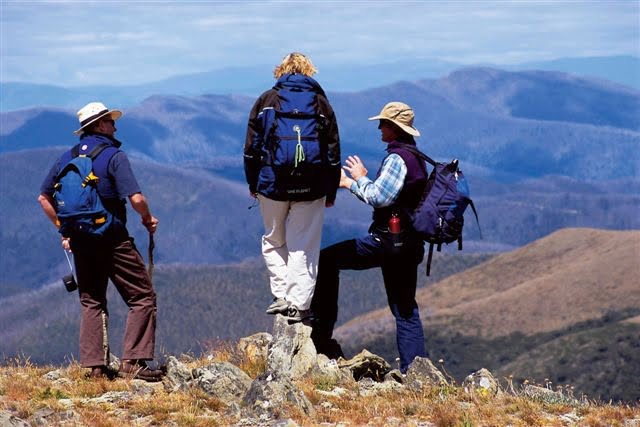
Getting Fit for Hiking
The lack of preparation and inappropriate footwear are the two main obstacles to being able to enjoy or even complete a multi-day walk. Blisters can be easily avoided by having good walking shoes and wearing them in before setting off. However, lack of preparation is by far the biggest issue as it requires discipline and effort. To complete your walk or hike by preparing before departure by training will help avoid failure or unnecessary pain and stress.
The level of training required will differ in relation to the length, the elevation and the terrain on a track. A sandy trail will wreak havoc on your calves. Weak glutes will greatly increase the strain on you and your knees when climbing and descending and walking stamina will affect how you cope with long walking days, particularly when you’re walking for consecutive days.
We cannot stress it enough: No matter how fit you are, your footwear will make or break a hike. Good shoes or boots will also protect and support your feet and ankles. Buy the appropriate footwear and then practice walking in them frequently as the second reason people struggle to complete walks are due to blisters. Again wear the shoes first before setting off on a long walk. See our article on what shoes to buy if you need further information. There’s an article on what socks to wear if you’re interested and an article on how to avoid getting blisters and if you do get them what to do.
Now let’s get into what to do to prepare for a hike.
The first thing to consider is what is your goal?
If you are planning multiple days of hiking, then at the very least you should be doing hikes of similar distances and terrain before you start your trip. Walking is in itself the best preparation. If the walk is 100k long at 20 km a day then you need to walk 10km 3 to 4 days a week for a couple of months. Then add 2 days of 20 km each week when you get closer to departure.
Don’t forget that you won’t be carrying a weighted pack when you go hiking with us so don’t worry about that. A day pack with 3 kgs of weight will suffice. Walk on a flat surface, but integrate hills if the walk you’re proposing to undertake has some elevation to it.
Aerobic Training
Integrate other types of aerobic training including using a cross trainer and stationary bike. Integrating non-hiking activities is very useful. Using muscles in a different manner than walking is essential. Do what you enjoy as this will make it easier. Swimming, riding a bike, running or other cardio-based activities are all worthwhile.
By the way, running or walking in sand is ideal as it builds the muscles that protect your knees and ankles. This is especially important on walks if the track is sandy.
Strength Work
Strength training helps to build up bone density, particularly as we get older. Strength training doesn’t mean lifting weights. Strength training includes working on your core, and the upper body.
The main exercises that will help to improve your walking ability are:
Squats
There is way too much information about this stuff. Feel free to do your own research but here are the basics.
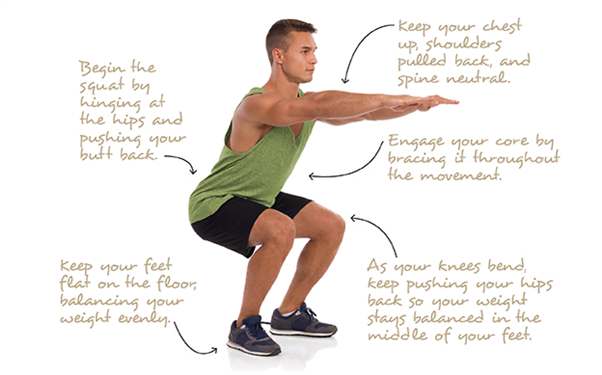
Building to doing about 3 sets of 10 reps of this exercise is more than enough.
Once you have built enough strength try doing single-leg squats as they are also great to improve your balance
Calf raises
Be careful here as some calf raise exercises are not that effective.
This is the best way to build strength but also emulates the over-stretching of the calves when walking on sand. Control not pace is the most important thing here. Feel free to grab on to something in the beginning to steady yourself.
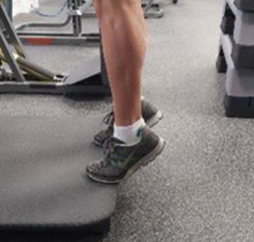
- Stand on the balls of your feet right at the edge of a step or some other raised platform.
- You can hold a pair of dumbbells or a kettlebell in your hands once you feel strong enough. Please keep your knees straight.
- Lower your heels a few inches toward the floor.
- Press through the balls of your feet and raise up as high as possible, elevating the heels toward the sky. Pause here for a second.
- Fully lower your heels toward the floor so your calves are in a stretch and then pause here for a moment.
- Return to Point 1. the middle position and then repeat the exercise slowly with control.
Build to doing about 3 sets of 10 reps of this exercise is more than enough. This exercise is particularly important when it comes to walking on sand.
Lunges
You can also hold equal weights in both hands. From a standing position, step forward until both legs are bent at 90 degrees. Push up, bringing rear foot forward. Repeat on the other side.
.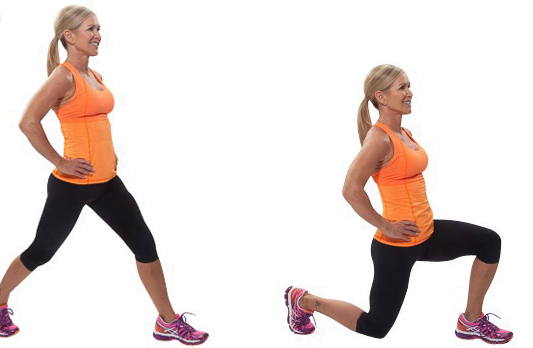
Poor Man’s Leg Curl
- Lay your body flat on the floor and move your hips toward an elevated bench.
- Place your left foot on the bench.
- Lift your right leg up as high as you can bear. See photo
- Press your left foot down on the bench, grip your glutes and hamstrings, and raise your hips off the ground. If this is too hard do the exercise with both feet on the bench
- Do 3 sets of 5 to 10
- Repeat on the other side.
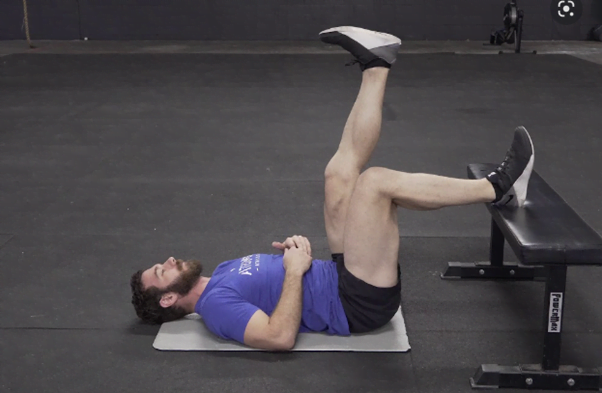
Step-ups
Before a hike even if the trip only requires wearing a 3kg pack, put some weight in your pack (use a few kg to start and build up to 10kg) and step up onto a park bench 16 to 18 inches high. To prepare for an extended, multi-day hike, do this exercise three times a week until you can do 350 steps in less than 30 minutes. This will help to build your glutes but also get you used to walks with elevation and/or stairs
Core work:
The body is a holistic machine and neglecting parts of it because you deem them not important is not going to work long term. When you service your car you wouldn’t forget the engine, nor should you ignore your core (lower abs). The core is where we move and exercise from, and that includes walking. Pilates is by far the best modality to assist improvement in your core strength and the awareness you need to understand that all movement emanates from the core. Or at least it should. Consider doing a few reformer classes with a professional or simply doing a Pilates mat class or two.
If you don’t want to pilates please do some crunches or sit-ups (please make sure you protect your back while doing so).
Upper body:
Tedious as it may seem (it probably is) in doing weights and or upper body exercises, all the aforementioned will help your body work efficiently. Don’t get stuck on getting bigger, it is a complete waste of time, it is a simple matter of balancing your work out, maintaining strength and toning up. Contrary to popular belief it is never too late to work on your upper body strength. It doesn’t matter what you do, just do something! Do some push-ups, pull-ups, or if you have weights or access to a gym do whatever you want to make it more interesting.
Flexibility/Stability
Most trails are uneven and have at least some elevation gain, so even the easiest hiking requires balance and strength to avoid injury.
Many people tend to ignore flexibility and stability training. Flexibility and stability are different and usually require different training but aren’t exclusive and can be combined with a breathing practice when doing yoga. There are some pretty basic yoga/stretching routines that can be done after walking training (and when you do the walk); before walking is not so important. Stretch the calves, the hamstrings, the quadriceps (thighs) and the shoulders and upper body with some twists and some side bends. Remember to breathe through your nose. Never stretch both hamstrings at the same time if you can avoid it, as it puts unnecessary strain on your lower back, particularly if you are more solid through the legs and the torso.
Most importantly never over stretch, ie the pain should be good pain (or slight discomfort) not like a knife piercing the skin pain. Take it easy, there is nowhere to get to when doing yoga or stretching.
Hamstring Stretch: Janu Sirasana
- Sit and straighten through the back and keep the back straight
- Lean forward from the hips
- Grap the foot (if you can’t grab the shin). Don’t be tempted to curl the back to get the head down to the knee. The ultimate goal is the head resting on the shin.
- Make sure the thighs are active, i.e flex the quadriceps.
- The front foot points up to the sky.
- Always breathe through the nose
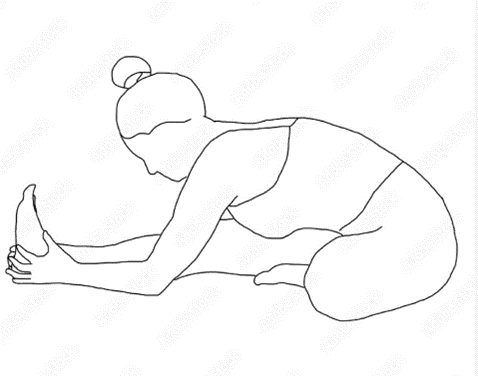
Thigh Stretch
This can be done with a bench, against a wall, side of a couch or against a tree if you have to.
- Facing away from a bench, bend one knee, and place it on the floor in front of the bench (wall or couch).
- If you are using a wall or couch, try to jam your knee as close to the wall or the side of a couch as possible (with the foot to the outside of the buttock for flexible people)
- Place the other leg, bent at a 90-degree angle and your foot flat on the floor in front of you.
- Raise your upper torso until you feel a stretch in the front of your thigh. Don’t go too hard, ease into it as you can make this stretch too strong if you lose concentration.
- Hold for 40 to 80 seconds
- Don’t forget to switch sides
- Always breathe through the nose.
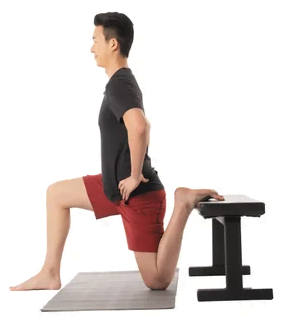
Standing Easy Thigh Stretch
- Stand on one leg, and if you need help with balance, stand with your side to a wall, and place your hand on the wall.
- Bend your outside leg, reach behind you, and grab your foot and pull it toward your buttock
- Keep straightening the back by keeping the core working.
- Feel a good stretch in the front of your thigh.
- Hold the stretch for 40 seconds to 80 seconds
- Repeat the stretch on the other leg
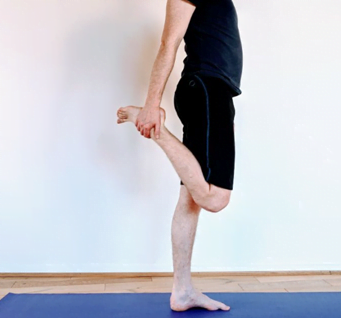
Stretching your Calves
- Stand straight with your hands against the wall
- Bring one foot forward on the wall with the toes up the wall and place the other back behind you
- Keep your back leg straight
- Bend your front knee to lean toward the wall.
- Intensify the stretch by leaning further forward.
- Hold the stretch for about 40 seconds
- Repeat the stretch on the other leg
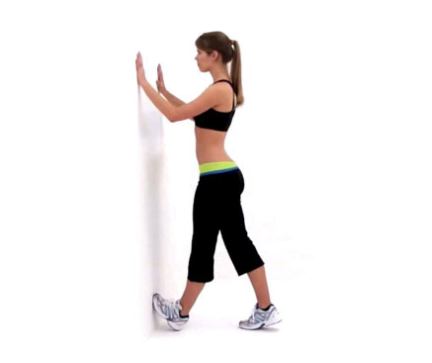
If you cant find a wall use a rock or anything with some height to it to stretch the calves.
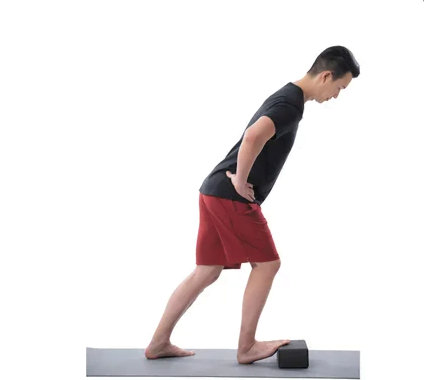
Side bends
- Stand up straight
- Keep the core active
- Lean to the side
- Bend the knee of the leg on the side you are stretching to intensify the stretch
- Repeat on the other side.
- Finish with a little bit of twisting, by swinging your arms in a slightly elevated position (at 45 degrees from the torso) from side to side.
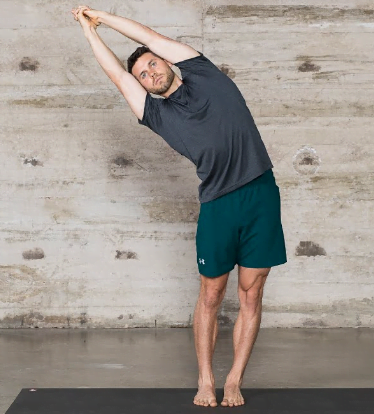
Shoulders
- Place both hands on a wall and step your feet back until your arms are straight.
- Make sure your arms are a little higher than your rear end
- Push against the wall, while trying to push the thoracic (chest) to the floor and bend from the hips until you feel the stretch in your shoulders.
- Make sure you turn your biceps up to the ceiling
- Do not let the shoulder muscles scrunch up and squash your neck. If you can keep the back of the shoulders wide, this will stop this from happening
- Maintain the stretch for 30 to 40 seconds.
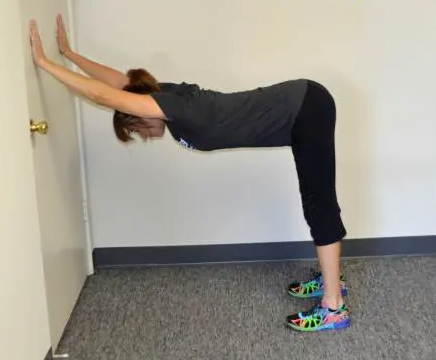
There are a ton of other stretches you can do post-walking. {Please go to a Yoga class, preferably a one-to-one class if you can afford it ( just a few times will be enough). A good yoga teacher will be able to be very precise according to your body and prescribe a stretching regimen that suits you.
One way to improve your balance is walking on uneven ground. It is another good way to do stability training. This promotes the usage of all the smaller stabiliser muscles in your legs. Strengthening these muscles decreases the likelihood of rolling your ankle or injuring yourself. Also, try to build a range of motion. Get a resistance band to strengthen your muscles through their full extension. Standing on a tennis ball or balance disc is great for this too as it builds the small stabilizer muscles around the ankle and knee.
Breathing
This is the least attended-to facet of walking. Most people think they have a hang of breathing, the test being after so many years they’re still alive. It is worth noting as a source of sustenance oxygen is the most vital, 3 to 5 minutes without it you’re probably brain-damaged, after 10mins, well you’re dead. There’s massive evidence that breathing through the nose is way more efficient and a healthier way to breathe. Its ancient knowledge and nothing new, the Tibetans, the Hindu yogis and even singers in the 18th century are among the many who knew and still know about the benefits of breathing properly. But nonetheless for whatever reason the knowledge seems to get buried over and over every generation.
The book by James Nester Breathe is a great place to start if you are not a believer. Otherwise, just start breathing through your nose at all times especially when you are exercising. The habit will carry over into your daily life. Or get online and do your own research, the evidence is overwhelming.
Alexander Technique
If you are interested in improving how you actually walk then get some help. The most basic advice is you walk with your knees first, that is to say, think about your knees moving forward first not your feet. Alexander Technique practitioners can help improve your actual walking gait. The three main principles of the Alexander Technique are simple, but are not easy to do. They are said to be awareness, inhibition of automatic reaction, and direction of conscious intention, if you can come to an understanding of the aforementioned it will most likely improve your walking style. It is all a bit esoteric but it worked for me.
If you think of it like this, Husein Bolt, although a man with great natural and physical ability didn’t just start running and then run some more and then win a gold medal. He worked on his strength, his flexibility, his cadence and a whole host of other things including his running gait; his running style. Or what is sometimes called form, essentially the foundation of everything?
Poles
If you’re concerned about your knees or ankles, consider buying a pair of trekking poles. They aren’t just for newbies or older hikers: Poles help anyone keep their balance on very rocky or uneven terrain. They give you an extra two “limbs” to hold yourself up while you navigate the trail. People with joint issues are especially wise to invest in a pair. Here’s an article that we have written about poles if you want more information.
The Program or Schedule
Here’s the hard part. The intensity, difficulty and amount of training needed are relative to the goal. If your goal is to walk to the café or alternatively the whole of the Camino, the training regime will obviously vary. The hard part is that you are going to need to take responsibility for training, all of it.
It’s pointless being prescriptive, as one size does not fit all. If you’re already running marathons, you won’t need to train at all. If you’re a weight lifter and you weigh 130kgs, well you may have an issue with walking 100 km, even though technically you may be very fit, just not for walking. The same goes for the other factors like age, body weight and even Injuries. Injuries that might have been sustained 40 years ago may still affect your walking ability. What I do know for sure is doing something is never a waste of time. Make an honest assessment of where you are at and make a plan and stick to it. No excuses.
Lastly, clearly preparing for a day hike is much different than a thru-hike. A thru-hike is like a pilgrimage. Give yourself six months to get ready, both physically and mentally. It’s smart to really consider what weeks of hiking will feel like. By the way on completion, it will feel amazing.
Bringing it all together
Create a Habit of walking and exercising and use common sense. Its all about balance, exercising regularly, but not too regularly. Training should not be a boot camp as it is counterproductive. Repetitive strain injuries brought about by excessive repetitive motions can be an issue. Factor in rest days and allow your body time to recover. Build up your distances and elevations when training. Don’t start a week out from the departure if you are walking 100km over 5 days. Create a plan, and fulfil the plan by creating habits. Please see James Clear’s excellent book Atomic Habits if you need some help on this. It is rather surprising how we work as humans and how we can hack that to create positive habits to your benefit.
Don’t be afraid of getting help. Skilled professionals like Yoga teachers, pilates instructors, physios, osteopaths, and personal trainers are a great help. And you don’t have to do everything mentioned above. But if you are failing to improve and you are doing what you have always done, don’t be afraid of changing it up.
Have fun hiking now that you’re prepared.


There are no comments, be the first to comment.